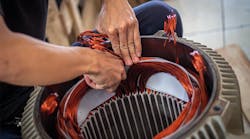Motors and drives are essential components in countless industrial and commercial applications, powering everything from manufacturing equipment to HVAC systems. Reliability in the context of motors and drives refers to their ability to operate consistently and predictably over time, without experiencing unexpected failures or breakdowns. Ensuring their reliability is crucial for maintaining smooth operations and minimizing downtime.
Achieving reliability involves a combination of proper maintenance, monitoring, and operational practices. This article reviews some strategies to become more reliable with motors and drives, helping you enhance efficiency, reduce costs, and prolong equipment life.
1. Regular Maintenance
Regular maintenance is essential for ensuring the reliability of motors and drives. This includes:
- Scheduled Inspections: Conduct regular visual inspections to check for signs of wear, damage, or misalignment.
- Lubrication: Ensure motors and drives are properly lubricated according to manufacturer guidelines to prevent friction and wear.
- Cleaning: Keep motors and drives clean and free of debris to prevent overheating and other issues.
- Alignment and Balancing: Ensure motors and drives are properly aligned and balanced to prevent excessive vibration and wear.
2. Monitoring and Condition-Based Maintenance
Implementing a monitoring system allows you to track the performance of motors and drives in real-time, enabling early detection of potential issues. Key monitoring techniques include:
- Vibration Analysis: Monitor vibration levels to detect abnormalities that could indicate misalignment, imbalance, or bearing wear.
- Temperature Monitoring: Measure temperature to identify overheating, which can indicate issues such as overloading or inadequate cooling.
- Current and Voltage Monitoring: Track current and voltage levels to detect anomalies that could indicate motor or drive issues.
3. Training and Knowledge Development
Investing in training and knowledge development for maintenance personnel can significantly improve reliability. Ensure your team is well-versed in:
- Motor and Drive Operation: Understand how motors and drives operate and the factors that can affect their reliability.
- Troubleshooting: Develop troubleshooting skills to quickly identify and address issues that arise.
- Safety Practices: Emphasize safety practices to protect personnel and equipment during maintenance and operation.
4. Upgrading and Modernizing Equipment
Consider upgrading older motors and drives with newer, more efficient models. Newer equipment often includes advanced features that improve reliability, such as:
- Energy Efficiency: Newer motors and drives are often more energy-efficient, reducing operating costs and environmental impact.
- Improved Monitoring Capabilities: Modern equipment may include built-in monitoring features that provide more detailed data for predictive maintenance.
- Enhanced Durability: Newer models may be designed to be more durable and resistant to wear and tear.
5. Implementing Redundancy and Backup Systems
In critical applications where downtime is not an option, consider implementing redundancy and backup systems. This can include:
- Backup Motors and Drives: Have spare motors and drives on hand to quickly replace any that fail.
- Uninterruptible Power Supply (UPS): Use UPS systems to provide backup power in the event of a power outage, preventing sudden shutdowns.
In conclusion
Becoming more reliable with motors and drives requires a proactive approach that includes regular maintenance, monitoring, training, and upgrading equipment. By implementing these strategies, you can enhance the reliability of your motors and drives, improve efficiency, and reduce costs in the long run. Investing in reliability is not just about preventing breakdowns; it's about ensuring smooth operations and maximizing the lifespan of your equipment.
